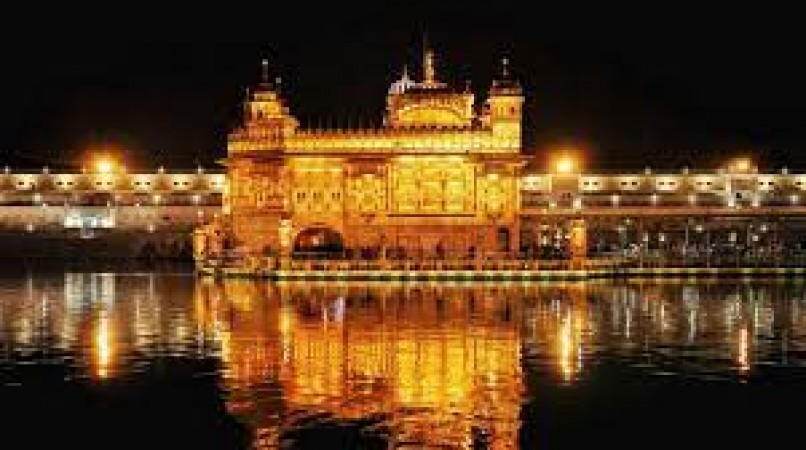
The Golden Temple, known as "Harmandir Sahib" or "Darbar Sahib," is a revered Sikh shrine located in the city of Amritsar, Punjab, India. It stands as a symbol of unparalleled beauty, spiritual significance, and inclusivity. This article takes you on a journey to explore the captivating charm of the Golden Temple, its history, architecture, and the spiritual practices that make it an essential destination for millions of visitors and devotees worldwide.
1. Introduction: The Golden Temple and its significance
The Golden Temple, a glistening marvel of spiritual brilliance, is the holiest Gurdwara (place of worship) for Sikhs. It was founded by Guru Ram Das, the fourth Sikh Guru, in the 16th century. The temple is a testimony to the profound faith, rich history, and spiritual values that form the essence of Sikhism.
2. History: Origins of the Golden Temple
The history of the Golden Temple dates back to the late 16th century when Guru Arjan Dev, the fifth Sikh Guru, designed the temple as a central place of worship for Sikhs. Over the centuries, it underwent several reconstructions and expansions, each adding to its grandeur and sanctity.
3. Architecture and Design: The captivating beauty of the Golden Temple
The architecture of the Golden Temple is a splendid blend of Islamic and Sikh styles, reflecting the harmonious coexistence of these two communities. The main temple is adorned with gold leaf, which gives it a striking appearance and inspired its name. The mesmerizing reflection of the temple in the surrounding Amrit Sarovar (Pool of Nectar) adds to its ethereal charm.
4. Spiritual Significance: The spiritual beliefs and practices at the Golden Temple
The Golden Temple is a place of deep spiritual significance for Sikhs, where they come to seek spiritual solace, express gratitude, and participate in the community's collective prayers and hymns.
5. Guru Granth Sahib: The central religious scripture of Sikhism
The Golden Temple reveres the Guru Granth Sahib, the eternal Guru of the Sikhs. The scripture, composed of hymns and writings of Sikh Gurus and other saints, is recited with devotion, and its teachings guide the lives of millions.
6. The Sarovar: The holy water tank surrounding the Golden Temple
The Amrit Sarovar, a large water tank surrounding the Golden Temple, is considered sacred. Devotees believe that taking a dip in the holy waters can purify their souls and bring blessings.
7. Langar: The communal kitchen serving free meals to all visitors
One of the remarkable features of the Golden Temple is its Langar, a community kitchen that offers free meals to everyone, regardless of their caste, creed, or social status. This practice embodies the principles of equality and selfless service.
8. Festivals and Celebrations: Vibrancy and devotion at the Golden Temple
The Golden Temple comes alive during various festivals and special occasions, such as Guru Nanak Jayanti and Baisakhi. The festivities are marked by spiritual fervor, colorful decorations, and devotion.
9. Tourism and Pilgrimage: Visitors from all around the world
The Golden Temple attracts millions of visitors from India and abroad, making it one of the most visited religious sites globally. Its welcoming ambiance and spiritual aura leave an indelible impression on the hearts of all who visit.
10. Impact and Contributions: The Golden Temple's role in the community
Apart from its religious significance, the Golden Temple plays a vital role in the community. It actively engages in charitable activities, including healthcare, education, and disaster relief, upholding the values of Sikhism.
11. The Eternal Flame: Joti Jot of Guru Granth Sahib
The Golden Temple's inner sanctum houses the Akal Takht, the highest temporal seat of Sikh authority. The continuous reading of Guru Granth Sahib is carried out here, symbolizing the eternal presence of the divine teachings.
12. Preservation and Conservation: Safeguarding this spiritual wonder
Preserving the structural integrity and historical importance of the Golden Temple is of paramount importance. Various organizations and the community collaborate to maintain the temple's splendor for future generations.
13. A Global Icon: Recognition and appreciation of the Golden Temple
The Golden Temple's beauty and the values it represents have earned it global recognition and admiration, with UNESCO also recognizing it as a world heritage site.
14. Embracing Diversity: The inclusive nature of the Golden Temple
The Golden Temple welcomes people from all walks of life, promoting a spirit of unity and brotherhood. It is a shining example of the inclusive nature of Sikhism. The Golden Temple, with its enchanting beauty and spiritual significance, stands as a testament to the profound faith and rich cultural heritage of Sikhism. It is a place of unity, love, and service, where people from diverse backgrounds come together to experience spiritual tranquility and engage in selfless acts of kindness.
India developing 400 km Long-Range Air Defense Missile System
Snapchat’s Value to drop down in the first Quarter after Parent Company to Fluff in
Google to Reveil Youtube Shorts Proceeds increasing Year by Year